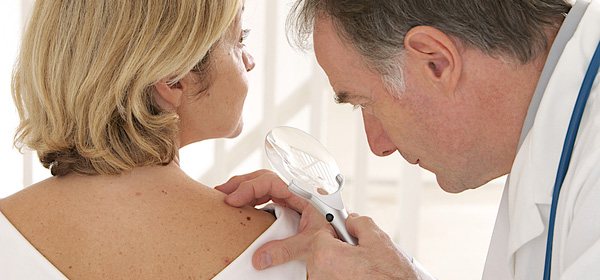Do. Don’t think. Don’t hope. Do. These are the famous words uttered by legendary Australian football coach John Kennedy at half-time in the 1975 grand final when Hawthorn was losing to North Melbourne. The Hawks still lost but the words have continued to resonate.
They became my mantra after being diagnosed with melanoma in 2009. That was my sliding doors moment. If I had followed Kennedy’s advice, the past eight years may have been very different.
It’s National Skin Cancer Action Week, an opportunity to put the spotlight on what we’re doing well in our “sunburnt country” and what we need to do better.
The kids get it, according to the Cancer Council. They’ve grown up with the slip, slop, slap SunSmart message and are a sun savvy generation.
Adults, however, are being more recalcitrant. The most recent Cancer Council survey shows that the proportion of adults wearing protective clothing has decreased in the past three years from 19 per cent to 17 per cent. The proportion of adults who get sunburnt on weekends is static at 17 per cent. That’s more than 2.7 million adult Australians who are damaging their skin and running the risk of developing melanoma.
With two in three Australians diagnosed with skin cancer by the time they reach 70, action week has a weighty message.
I grew up in sunny Queensland in the 1960s and `70s when baby oil – and not 50+ sunscreen – was the preferred tanning agent. There were plenty like me.
It wasn’t until I hit my 50s that there was a problem.
This is what I learnt – the hard way:
1. Organise annual (at least) skin checks with your GP, dermatologist or specialist skin check centre.
2. If you spot something suspicious, a mole that changes colour, becomes raised, bleeds, see your doctor – immediately. Don’t think about it for several weeks until you have a list of things to make the visit worthwhile, as I did.
3. If you can’t get a prompt appointment when you’re referred to a skin specialist, get your GP’s receptionist to help. He or she is far more likely to get you an earlier date. Speed could be vital.
4. Do. Don’t think. Don’t hope. Do.
When I first spotted a mole on my right leg that had been bleeding, I waited several weeks before making an appointment with my doctor. She advised that nothing looked suspicious but referred me to a dermatologist anyway. The first available appointment with that person was six weeks off. I tried other specialists but the wait time was the same.
The dermatologist checked my body and got me back the following day to remove two moles – right leg, right arm. Five days before Christmas I was told both were melanomas.
After Christmas, a surgeon removed more tissue – a procedure they call a wide excision – from the two sites, the standard practice to contain the disease. Two years passed without a hiccup.
Then I found a lump on my right leg. An ingrown hair, said a GP, despite knowing my history. Nothing to worry about, he said, it will go away. Weeks later, when the lump was still there, I sought a second check from another GP and was sent to the Alfred Hospital melanoma unit for a review. A tumour.
Over the next five years the tumours kept coming. I had five operations and two month-long sessions of radiotherapy.
But I’m one of the lucky ones. In January it will be five years since my last operation and radiotherapy – a landmark date that many who are diagnosed with melanoma don’t reach.
Be vigilant – no matter what skin type you are. I do not have many moles. I have olive skin. There is no history of melanoma in my family. Yet …
And cover up. I have to hold myself back when I see sun-worshippers soaking up the rays. Believe me, it’s not worth it.
Have you had a brush with melanoma?
Related articles:
Skin cancer signs
New melanoma drug
The best sunscreen for you

